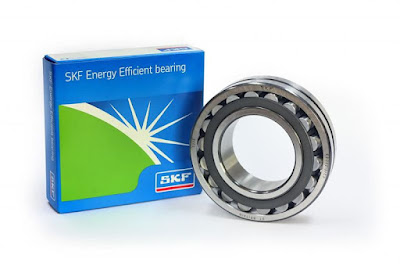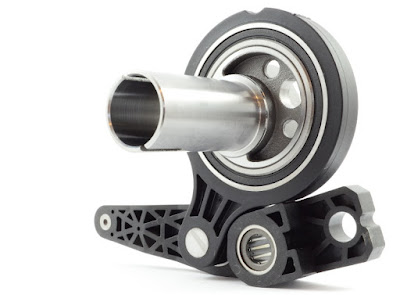Ball bearings and energy saving
In today's global economy, manufacturers and industries are constantly in search of ways to improve the efficiency and sustainability of their operations. One area that has seen significant advancements in energy-saving technology is the use of ball bearings in machinery and equipment. Ball bearings are mechanical devices that reduce friction between two moving parts, thus improving their performance and lifespan. As energy consumption continues to be a major concern for businesses and governments worldwide, finding ways to reduce waste and maximize efficiency has become paramount. Ball bearings play a crucial role in achieving these goals by reducing the power needed to operate machinery and equipment, ultimately leading to significant energy savings. Additionally, the use of high-quality, durable ball bearings can also lead to reduced maintenance and replacement costs over time. In this blog post, we will explore how ball bearings contribute to energy savings and the benefits they offer to manufacturers and industries. We will also highlight the latest advancements in ball bearing technology and how they are being utilized to help businesses meet their energy efficiency goals.
1. The impact of ball bearings on energy efficiency in machinery.
Ball bearings are essential components for machinery and devices, as they enable smooth motion and reduce friction between moving parts. However, their impact on energy efficiency is often overlooked or underestimated. The use of high-quality ball bearings can significantly improve the energy efficiency of machinery, resulting in cost savings and reduced environmental impact. By reducing friction and minimizing energy losses through heat generation, ball bearings can increase the overall efficiency and performance of machinery, thereby reducing energy usage and associated costs. As a result, it is crucial for industrial manufacturers and equipment designers to carefully consider the selection and use of ball bearings in their designs to maximize energy savings and improve overall efficiency. By focusing on the role of ball bearings in energy conservation, it is possible to improve machinery design and productivity while reducing energy consumption and environmental impact.
2. How the design and material of ball bearings affects energy consumption.
Ball bearings are crucial components in various industrial applications and are used to reduce friction and minimize energy loss caused by frictional forces. This makes them a critical element in energy-saving efforts. The design and material of ball bearings have significant implications for the energy consumption of machinery in which these bearings are installed. The design of ball bearings can be optimized to reduce energy losses caused by friction by addressing issues related to lubrication, and minimizing the contact surfaces between the balls and the raceways. Additionally, the material used in the manufacturing of the ball bearings can also affect their energy efficiency. Choosing materials with high strength, low friction, and excellent wear resistance can lead to substantial reductions in energy usage. Thus, careful consideration of the design and materials used in ball bearings is essential in achieving optimal energy-saving performance.
3. The importance of proper lubrication for ball bearings to reduce friction and save energy.
Ball bearings are mechanical devices that are widely used in various equipment to enable smooth and efficient power transmission. Proper lubrication is essential for achieving optimal performance and maximizing the energy-saving benefits of ball bearings. Proper lubrication not only reduces friction, but also prevents overheating, wear and tear, and the costly downtime that can occur when a bearing fails. Additionally, lubrication plays a crucial role in extending the service life of ball bearings and improving system reliability. In this document, we will discuss the importance of proper lubrication for ball bearings, the various lubrication techniques available, and the best practices for ensuring long-lasting and efficient bearing performance.
4. Tips for selecting the right ball bearings for your equipment to achieve optimal energy efficiency.
Ball bearings are an essential component of many types of equipment in various industries, including automotive, aerospace, and manufacturing. Choosing the right ball bearing is crucial to ensure optimal energy efficiency and reliable performance of your machinery. Proper selection of ball bearings can lead to tremendous energy savings, resulting in reduced operating costs and a more sustainable operation. This document provides valuable tips for selecting the right ball bearings for your equipment to achieve optimal energy efficiency. By following these tips, you can make informed decisions about ball bearing selection, leading to increased efficiency and sustainability in your business operations.
5. The long-term cost savings of investing in energy-saving ball bearings for your business.
Investing in energy-saving ball bearings for your business can have significant long-term cost savings. By reducing the energy usage of your machinery and equipment, you can substantially cut down on your company's energy bills. Energy-efficient ball bearings are designed to minimize friction and reduce heat generated during operation, resulting in less energy required to operate them. As a result, the energy savings can add up quickly, making this investment worthwhile. In addition to financial benefits, using energy-saving ball bearings aligns with the modern emphasis on sustainability and reducing carbon footprints. By taking steps to make your operations more energy-efficient, you can attract eco-conscious customers and improve your brand image. Overall, while there may be some upfront costs associated with upgrading to energy-saving ball bearings, the long-term benefits make it a smart investment for any business looking to reduce energy consumption and save money in the long run.
In conclusion, ball bearings have become an essential part of the modern energy-saving industry. They help to reduce friction and wear between moving parts, resulting in increased energy efficiency and reduced energy consumption. By using high-quality ball bearings in machinery and equipment, businesses can save money on energy costs and reduce their carbon footprint. As technology continues to advance, we can expect to see even more innovative ways that ball bearings can contribute to energy conservation and sustainability.




Megjegyzések
Megjegyzés küldése